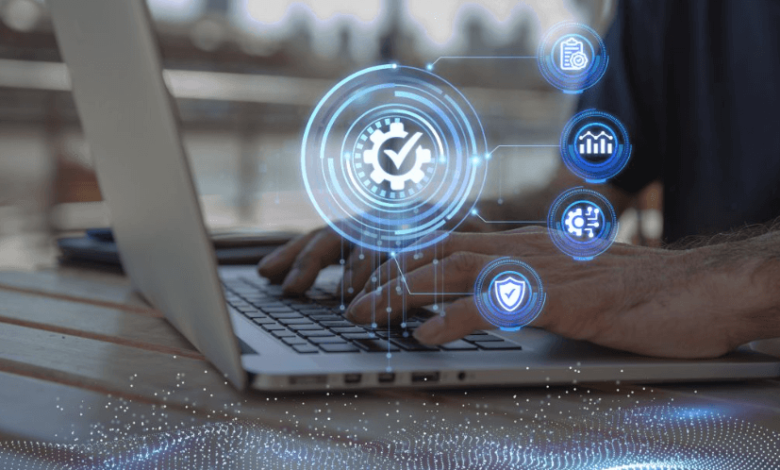AI-powered purchase to pay software: The future of procurement automation

Intro
The procurement systems using AI are changing the way companies control spend, automate workflows, and mitigate risks. Modern purchase to pay software platforms can provide end-to-end visibility and control over procurement processes through harnessing machine learning, advanced analytics, and automation. This article focuses on the future of procurement automation, including the way in which AI-based strategies can maximize efficiency without sacrificing compliance or encouraging innovation in the sourcing, invoicing, and payment processes.
The rise of AI in procurement
Artificial intelligence is quickly transforming procurement by allowing predictive analysis, intelligent workflows, and automated decision-making. Manual processes like issuing purchase orders, matching invoices, and supplier vetting are now done more effectively with the help of AI-powered modules in purchase to pay software solutions. These systems, using historical data to learn and natural language processing, can detect patterns, highlight anomalies, and even recommend best order quantities or preferred suppliers. The addition of AI does not just increase the pace of the operation but also makes operations more accurate, eradicating errors likely to occur due to manual entry and the division of data sources. In addition, faster cycle times, better supplier relationships, and proactive mitigation of risks provide a competitive advantage to organizations adopting AI-centric procurement solutions. The better the AI capabilities, the more the procurement team is freed to focus on more strategic activities using that intelligence to add value throughout the supply chain and enforce a perpetual ongoing improvement.
Enhancing efficiency with automation
Purchase to pay softwarewith automation solutions transforms operational efficiency, decreasing manual intervention and automating end-to-end processes. The manual activities associated with invoice processing, approving orders, and reconciling payments have been eliminated, and functions are now automated, reducing the procurement cycle and lowering administrative expenses. Smarter automation of routine functions also facilitates enhanced tail spend control through the categorization of low-value spending and routing it using policy rules, eliminating leakage and establishing transparency. Moreover, configurable workflow engines in sophisticated purchase to pay programs enable organizations to dynamically adapt rules, which would force compliance and prevent bottlenecks. Through automation of routine tasks, the procurement teams will have more time to devote to strategic sourcing, supplier interrelations and riskmanaging. Measurements like cycle time, cost per transaction, errors rates are enhanced substantially which is a straight indication of the returns on investment. With industry leaders implementing these AI-powered purchase requirements, efficiency improvements establish new standards, accelerating the overall course of digitalization and an information-oriented culture that constantly optimizes processes.
See also: Tech innovations transforming logistics and risk management
Data-driven decision making
With advanced analytics incorporated into a purchase to pay software, procurement chiefs can be provided with profound knowledge on cleaning up habits, provider fitness, and patterns. Dashboards and predictive modeling enable stakeholders to predict demand, identify new risks, and streamline budgets with confidence. This data-driven process is applied to tail spend management to uncover hidden areas of ad hoc purchasing and the visibility to consolidate or renegotiate contracts. Also, machine learning algorithms in the platform use historical purchase data to identify cost-saving opportunities, flag compliance violations, and recommend the best reorder points. The interactive reporting features enable the user to subdivide data into categories, regions, or supplier levels, which promotes more subtle analysis to make strategic sourcing decisions. Modern purchase to pay software combines real-time data feeds amongst ERP, inventory, and finance systems, so that every decision considers the most up to date information. As organizations embrace these analytical tools, the procurement organization shifts from a transactional activity to a strategic e-business that provides value to the business.
Strengthening compliance and risk mitigation
Risk management and compliance are an essential part of contemporary procurement systems. The purchase to pay software imposes both internal policies and regulatory requirements with minimal manual supervision by incorporating audit trails, approval hierarchies, and automated compliance checks. The real-time monitoring capabilities of the system identify possible fraud, duplicate invoices, and nonconforming purchase requests, offering real-time alerts to investigate. Additionally, mature solutions have taken compliance protocols beyond tail spend management to include controls over decentralized procurement and making sure low-value transactions are done in accordance with contract terms and negotiated prices. The risk mitigation is also improved by supplier risk scoring that determines the financial stability, performance history, and geopolitical issues. Within a centralized dashboard, procurement leaders get a clear picture of exposure and can act proactively to address supplier-related risks. Finally, the integration of compliance and risk management into the purchase to pay software system will guarantee the stakeholders that the procurement processes will be transparent, audit-proof, and that they are aligned with the organizational goals.
Transforming supplier collaboration
Procurement excellence is dependent on effective supplier collaboration. The AI-enabled platforms are at the center of integrating communication channels, allowing real-time order tracking, as well as automating feedback loops. Self-service portals can be used by vendors to provide invoices, make catalog updates, and troubleshoot without hours of email correspondence and follow-ups. The common platform encourages openness, minimizes misunderstandings and resolves conflicts faster without compromising data integrity. Performance measures and communication records are maintained in a central warehouse, enabling procurement teams to measure responsiveness and quality of suppliers over the long term. Moreover, messages and workflow alerts are combined to where approvals, shipments, or contract renewals can be communicated to the participants. By integrating these interactions into a single environment, organizations can decrease delays and establish stronger and more strategic relationships with their suppliers. The deeper collaboration is made the more a buyer and supplier know about requirements, schedules, and performance standards, which results in a shared responsibility and continuous development of supply chain relationships.
Optimizing tail spend management
Tail spend is a large but underrepresented area of overall procurement budgets, and consists of millions of small purchases that are not easily controlled. Purchase to pay software powered by AI solves this dilemma by using automated categorization, policy enforcement, and analytics to personalize spend management, allowing companies to combine fragmented orders and negotiate better pricing. The platform automates the routing of small purchase requests via predefined channels using intelligent bots and rule-based workflows, minimizing cycle times and offering adherence to procurement policies. Tail spend data is then grouped using advanced reporting tools, and patterns are identified, which can be used to inform strategic sourcing efforts or even the introduction of preferred supplier programs. Punch-out catalogs and e-procurement catalog integration further smooth requisition processes and bolster compliance with negotiated rates. Such a high degree of automation not only provides cost savings but also greater transparency into previously obscure categories of spending. Incorporating extensive tail spend management functionality into a centralized procurement environment enables stakeholders to turn inefficiencies into quantifiable results.
Conclusion
Artificial intelligence-enabled systems are transforming procurement with automation of standardized work, enhancing compliance, and delivering insight via sophisticated analytics. Having the purchase to pay software at the heart of it, organizations can attain more efficiency, visibility, and savings in all types of spend. Adopting such technologies prepares them to address tail spend management issues, collaborate with suppliers, and transform procurement into a success-oriented force.



